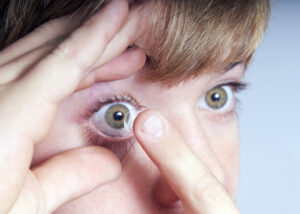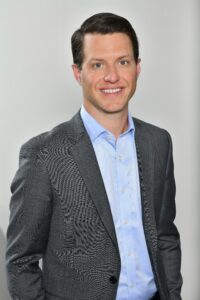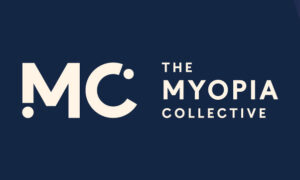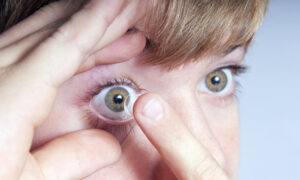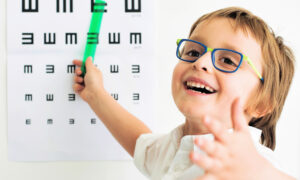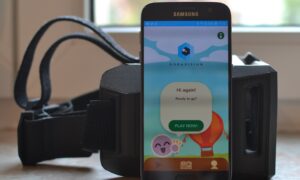sponsored content
June 3, 2024
By Andrew Biondo, OD
As a myopia management practitioner for over 10 years, I’ve come to learn that any myopia treatment is better than no treatment at all. While orthokeratology is our primary treatment modality, we also offer patients low-dose atropine and soft multifocal contact lenses, and each patient’s unique needs help us determine which course of treatment to adopt.
It’s important to determine a child’s hobbies, daily schedule, maturity, and eagerness to pursue the treatment. In general, we find the vast majority of kids to be highly adaptable, and they’re almost always able to master any modality in a short amount of time. We always warn parents of early stresses and frustrations when starting a new treatment, but we reassure them that these tend to pass quickly — typically in just a few days. The ultimate treatment decision should be made by the parent and child, though guided by the practitioner based on professional expertise.
Why OrthoK?
In our office, OrthoK has become our first-choice treatment option for myopic children, and this is the case for a few reasons.
Children are active. They play at school, they often play sports, and they enjoy swimming in the summers (or sometimes year-round). Additionally, it isn’t uncommon for children to start myopia management at 6 years old — or sometimes even younger.
OrthoK offers the distinct advantage of having complete freedom from daytime glasses and contact lenses. Plus, all contact lens wear, cleaning, and handling is done at home and under the supervision of an adult when necessary. There are no contacts to pop out, no glasses to break, and no concerns with water-borne infection at the pool. OrthoK continues to prove itself as equally or more effective at controlling axial length growth when compared to other forms of myopia control, and it has a decades-long track record of safety and efficacy.
‘Kid-LASIK’ — Talking to Patients and Parents About OrthoK
While more parents than ever are familiar with OrthoK, and many are seeking us out for the treatment, most parents still find it to be a foreign concept. That being said, with a short conversation regarding the benefits, safety, and efficacy, parents are eager to protect their children’s vision and move forward with the treatment plan.
As practitioners, it’s our job to explain the ins and outs of the treatment plan that we’re recommending for our patients. When it comes to OrthoK, this means describing the process in terms that are easy to understand for children and their parents. When discussing OrthoK with the parents of a prospective child, I always use the word “fun.” This is a surefire way to get kids on board, and it helps ease some of the concerns parents might have. Children love that they’ll have clear vision and independence from glasses or contacts during the day, and parents are amazed by the results. We often use the term “kid-LASIK,” and that has really resonated with our patients.
Using the REMLens for Myopia Management
I’ve been fitting my patients in the REMLens for five years now, and I really appreciate how easy it is to fit with empirical measurements and the first-fit success rate. Because you never know when a child with myopia might show up in your chair, it is difficult to fit in a diagnostic fitting without disrupting a busy day in clinic. Instead of having the patient return for a fitting and taking up more valuable chair time, being able to accurately and reliably order an empirical lens is crucial. Additionally, the REMlens was designed with myopia management in mind. By allowing optical zone adjustments, I am able to ensure I have peripheral defocus within the pupil for optimal myopia control effect.
The ordering process is equally as simple as the fitting process for practitioners. The lens can be ordered either using an online calculator that allows you to decide how much information you want to provide, or by contacting one of X-Cel’s consultants over the phone or through email and sharing the patient’s topographies. You can order a lens with as little as Ks and refraction, or you can add in other important measurements, such as corneal diameter and eccentricity to increase your chances of first-fit success.
Industry Support Simplifies the Process
OrthoK can seem daunting and overwhelming for someone who may not be comfortable with specialty contact lenses. For practitioners just starting out, it’s important to start with cases that are more-or-less “slam dunks.” These would include patients with -4.00D of myopia or less, mild to moderate with-the-rule astigmatism, and fairly normal keratometry and corneal diameter readings.
Moreover, working with companies such as X-Cel Specialty Contacts simplifies the process. X-Cel makes our job as doctors easier with simple fit guides, expert consultants, and worry-free warranties. I think most practitioners will find modern OrthoK much more successful than one would expect, thanks in large part to user-friendly designs such as the REMlens.
X-Cel does an incredible job of tailoring the experience to benefit the practitioner. They have a tremendous product line that offers our patients consistently optimal results. In addition, the company makes it easy on the doctor and staff with long warranty periods, easy exchanges, and hassle-free cancellations. Perhaps X-Cel’s biggest strength is its large stable of talented consultants who are readily available and easy to get a hold of during a busy workday.


